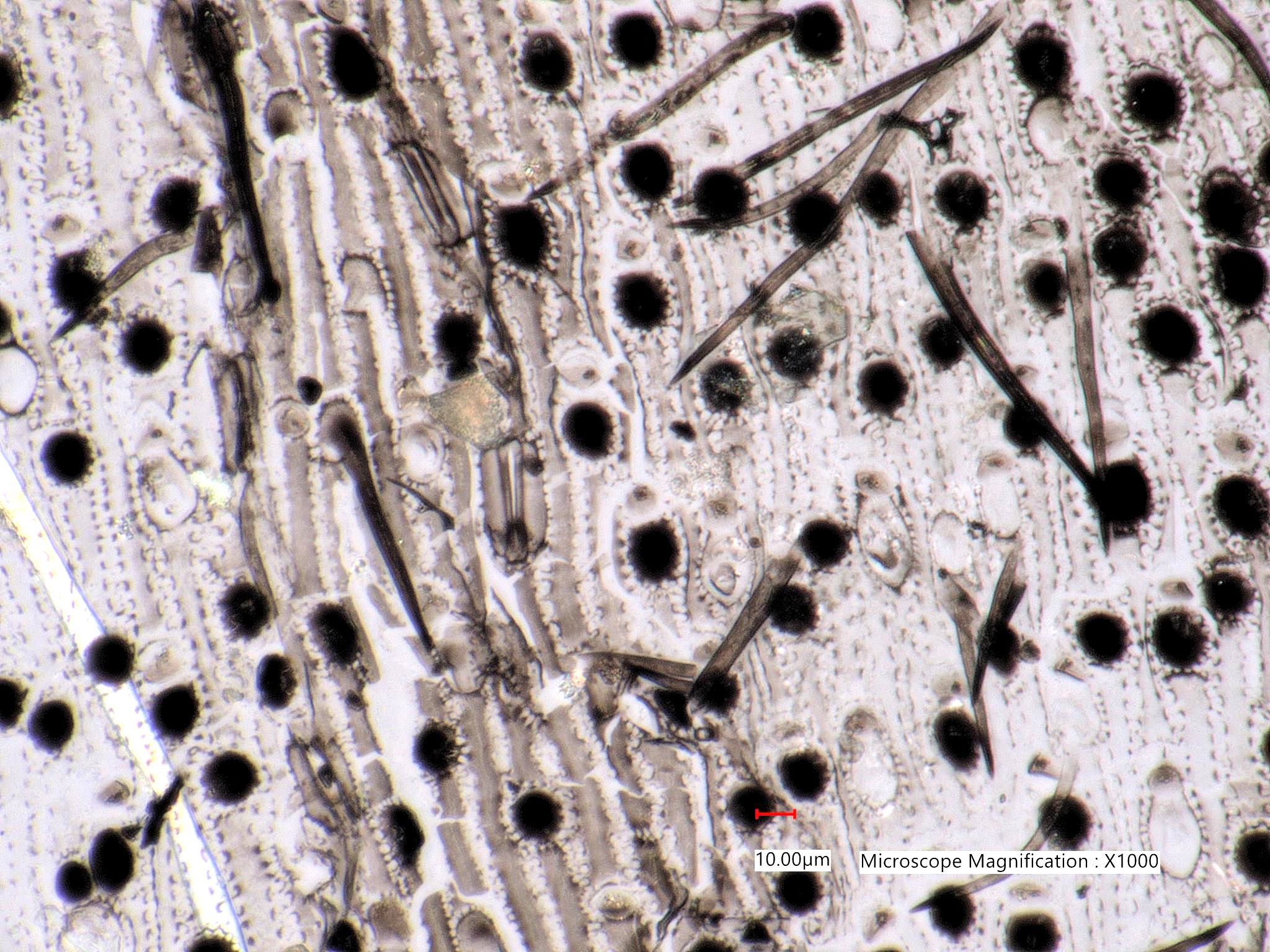Charred Grass
This is from an environmental tapelift collected in a home near a wildfire.
Definition/Function:
This is ash of the leaf epidermis. The surface of grass leaves are often highly
silicified. This is a fragment of ash
collected on a tapelift from a home exposed to the Saddleridge wildfire. The
characteristic features of a grass leaf are
shown here.
1. The surface cells are elongated, uniserial strings, and often silicified,
2. The long edge of the cells are toothed, having a comb-like pattern,
3. The stomata are all aligned (three are shown in the upper half of this
image)
4. The pubescence base cells for the hairs on the leaf are aligned, round, and may
separate leaving a round hole in the char.
5. A number of carbonized plant hairs can be seen. The hairs are coated with silica.
The organic contents have been charred.
6. A vein can be seen running slightly diagonally from bottom center to top left.
This is an invasive grass that is contributing to the frequency and severity of
wildfires in the Western United States. In the
past few years charred and ashed grasses have become a major marker for wildfire
debris in homes.
Significance in the Environment:
Characteristic Features:
Associated Particles:
References:
Ruggeberg, Markus, Ingo Burgert, and Thomas Speck, "Structural and mechanical design
of tissue interfaces in the giant reed,
Arundo donax", J. R. Soc. INTERFACE, vol. 7, pp. 499-506, 2010
Coffman, Gretchen C., Richard Ambrose, and Philip Rundel, "Wildfire promotes
dominance of invasive giant reed (Arundo donax) in
riparian ecosystems", BIOL INVASIONS, vol. 12, pp. 2723-2734, 2010.
Coates, Peter S., Mark A. Ricca, Brian G. Prochazka, Matthew L. Brooks, Kevin E.
Doherty, Travis Kroger, Erik J. Blomberg,
Christian A. Hagen, and Michael L. Casazza, "Wildfire, climate, and invasive grass
interactions negatively impact an indicator
species by reshaping sagebrush ecosystems", PNAS, vol. 113, no. 45, pp. 12745-12750,
Nov. 8, 2016.


